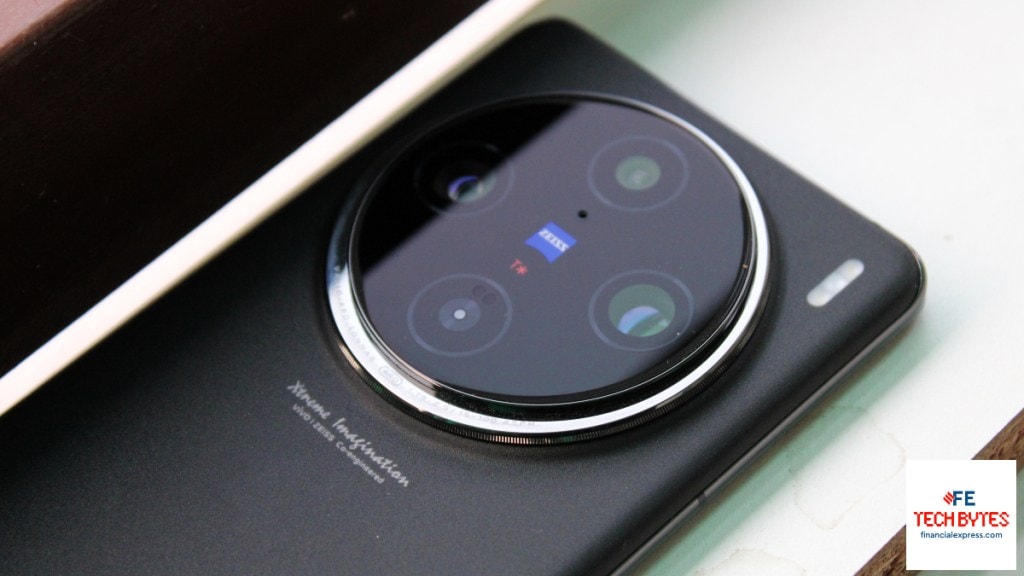Vivo’s market share in the above Rs 30,000 category rose to a substantial 22 percent in the second quarter of 2023 from just 3 percent in 202o, according to industry reports. Incidentally, 2020 was the year that Vivo debuted its X-series in India with the X50. With the new X100 series, the brand has even bigger ambitions and while it’s too early to put a number to it, Vivo says, it isn’t chasing them at least not anymore.
The X100 phones, particularly the X100 Pro, challenge Samsung’s smartphone camera zoom dominance with powerful hardware but Vivo India’s head of product management, Vikas Tagra believes, hardware tells only half the story. The secret sauce may be something else. Excerpts.
The road from 3 percent to 22 percent— take us through the journey. How has the X-series evolved over the years?
Vikas: Three years back when we decided to start our X-series journey in India market, things were not easy. Earlier, the V-series used to be the flagship for us. But ultimately, for every brand, it’s the rub off effect which falls from top to bottom. We always wanted to gain some share in the premium market, and so we decided to conceptualise our X-series for that.
We [have] emerged from 3 percent market share in the 30K plus category to 22 percent market share. It’s a huge jump for us and I think we were able to do it because of all the core technologies and experiences that we were able to bring to our consumers. Gimbal as a technology is one example. The X50 series was designed for the premium consumer looking for stability in camera experience. In the next generation, we collaborated with ZEISS [with the X60]. Both ZEISS and Vivo are pioneer companies with a camera-first approach. ZEISS is known for its century old optics and Vivo is also known for its camera expertise. We collaborated with ZEISS and took the portrait experience to the next level.
Every phone can take portrait shots, but we worked with ZEISS to bring ample number of options for people to add artistic effects in portraits like swirly bokeh effects with the Biotar [ZEISS lens] and all that. But we did not stop there. In the X80 we brought anamorphic lens effects that otherwise cost lakhs of rupees. Then we could figure out that night photography was a consumer pain-point. We addressed that by bringing a 1-inch [type] sensor. Our endeavor has been to enable consumers to live out unimaginable things that they were unable to do a few years back.
What does it say about the India market’s appetite for premium phones and features?
Vikas: In India, the premium segment market is very niche. There are very few players. But what we have understood from consumers is that it’s not a numbers game anymore. Megapixels are a thing of the past. We have given a telephoto in our X100 series but while other brands may relate it with 50X, 100X, for us it is different. We tried to figure out the most often used scenarios for telephoto by consumers and found that they want to capture golden moments like sunrise and sunset, but they are still struggling to get it right. So, we got the APO telephoto setting from ZEISS, an industry standard, for the first time on the X100 Pro. We even put the largest aperture of f/2.5 on a Vivo phone yet.
So, if you can give some unique perspective and proposition, then the Indian consumer will take it regardless of whether you are a new entrant in the segment, or you’ve been doing this for years?
Vikas: I will put it in this way: as a product manager, if you don’t know your consumer, you can’t create a product, it will be just another commodity. Right now, in the smartphone industry, you see everyone has a chip. Everyone has some or the other display. We have been able to take the game forward because we understand our consumers need better. If you can tap on to the right consumer at the right time, the game will be yours.
With rise in Generative AI and algorithms taking centre stage, have we passed the phase where hardware would govern everything (and by extension buying decisions)?
Vikas: Generative AI and computational photography are going to enhance the consumer experience even if it is a wait and watch thing [right now]. But as a company, we need to strike the right balance with the hardware and software. That is what we are working on. We have been writing algorithms which are specific for different scenarios but at the same time, you’ll need hardware and optics to support them. That is the secret sauce behind our success and that’s why consumers are liking our imaging capabilities. We are not talking about just numbers but about the quality of the output or the quality of the images, which our consumers are going to enjoy.
Likewise, are moon shots passe considering how your new phones shoot for the sun?
Vikas: Consumer won’t tell you to bring some technology or feature. As a brand, you should analyse what they are using or what are the most used scenarios. We invest a lot in consumer research and over the last few months and the last generation, we could figure out that people are still struggling to capture the sun. So, why not write some special algorithms to make those golden moments more delightful? Whether it the warm tone or shape, consumers want to look at them in their full glory. We are not here to compete with anyone. As a brand, our endeavor has always been to better our game every time with the previous generation. A lot of loyalists buy our devices. They are camera enthusiasts. We just want to elevate this experience for them.
Your choice of a MediaTek chip (and not Qualcomm) in the X100 series is proving to be a bit polarising. What do you have to say about that?
Vikas: The first thing that our X-series and V-series consumers, who we call premium consumers, look for, is the design, how does it look in the hands, is it ergonomically fit, easy to carry, and whether the camera module looks beautiful or not. The second thing they look at is whether the camera is good or not. The chip frankly comes later. We decided to go ahead with the flagship MediaTek Dimensity 9300 for the simple reason because when it comes to the performance of the device, our imaging expectations are very high and the D9300 was the perfect choice to enhance our ISP capabilities. We have also worked with MediaTek in establishing better anti-shake capability in our camera. People feel a better processor means better performance in games only, but we have gone beyond that. It’s just not about gaming experience. It’s also to do with the ISP capabilities.
What is taken into consideration while pricing these phones?
Vikas: When it comes to our X-series pricing, we make sure it should be within the reach of our consumers and we should not vary too much as compared to our last generation because if the delta is too high, you end up losing many consumers. We make sure there are enough affordability schemes to make these aspirational phones, expensive phones, affordable to our consumers.
Follow FE Tech Bytes on Twitter, Instagram, LinkedIn, Facebook.









